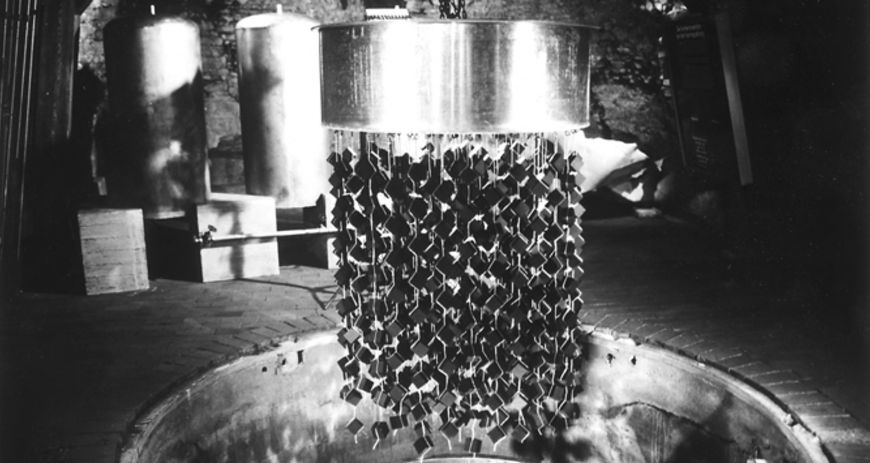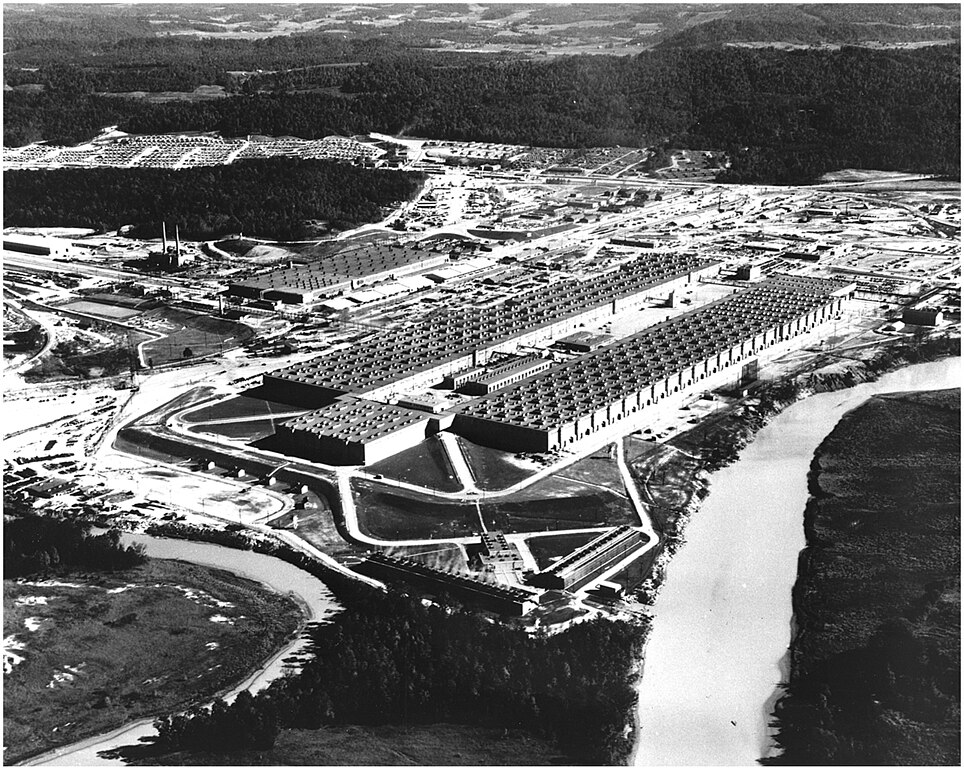Chapter 730: The Sun Bomb

With the largest and bloodiest war in human history, the Second Great War continuing, all sides involved tested out new weapons to end the war quickly and in their favor. This also included nuclear research in hopes for a atomic bomb. Lead by physicist Yoshio Nishina and General Takeo Yasuda alongside Tatsusaburo Suzuki they were intrigued by the discovery of nuclear fission and believed it would be possible to construct an atomic weapon. Even at that early stage, uranium procurement was identified as a crucial problem. Yoshio Nishina, who had studied under Niels Bohr in Copenhagen. Nishina worked at the institute known as Riken, near Tokyo. He succeeded in building the first cyclotron outside the United States in 1937 and would complete a larger one in 1944, both with the assistance of Ernest Lawrence. The IJA officially authorized Nishina’s lab to research an atomic bomb in April 1941. The project became known as Ni-Go. Ni-Go itself had five research themes: atomic bomb theory, separation of uranium-235, production of uranium hexafluoride, measurement of physical constants, and analysis of isotopes. Nishina’s team’s initial conclusion was that an atomic bomb was theoretically, but not technically, feasible. Still they continued to pursue uranium enrichment via gaseous thermal diffusion, to create an atomic bomb. A test side and research facility was build in Konan, Chosen headed by Bunsaku Arakatsu and staffed by about 40,000 Japanese workers, of whom approximately 25,000 were trained engineers and scientists. The organization of the plant was set up so that the workers were restricted to their areas. The inner sanctum of the plant was deep in a cave. Here only 400 specialists worked. In 1943 they believed it would take Japan roughly ten years to build a functional sun bomb as they would later call it, or Genzai Bakuden (Japanese for new bomb, or modern bomb). This meant the device could not be used for defensive purposes against the United States Navy, or to bomb the United States West Coast to enforce them to accept a surrender to the Japanese demands. The main problem remained the Uranium necessary for the bomb, but by 1952 the Japanese had found desposits of Uranium in Yankoku, National Han China, western Mengjiang, western Tibetan Empire (both in central Asia) and Australia (Ōsutoraria, also Australasia, Australian South Asia, Asia Meridianam, Minamiajia the newest member of the Co-Prosperity Sphere with increasing majority numbers of Japanese settlers thanks to political, economic and military pressure that transformed it into another “Yellow” continent) as well as later Afghanistan and parts of former India. The first successful Japanese nuclear tests however would be concluded in 1944 and 1948 when they first tested the Genzai Bakudan or Sun Bomb. The observers of said test were 20 miles away. This waiting was difficult and strange to men who had worked relentlessly so long and hard on the project. Suddenly the light in the east where Japan lay grew brighter. The moment the sun peeped over the sea there was a burst of light at the anchorage blinding the observers who wore welders' glasses. The ball of fire was estimated to be 1,000 yards in diameter. A multicolored cloud of vapors boiled toward the heavens then mushroomed in the stratosphere. Amaterasu had granted Japan her sun powers. The Empire of Japan and it's Co-Prosperity Sphere would later become one of the largest nuclear superpowers of the century.


Known as the Uranproject by the Germans the German Empire started with it's own research just months after nuclear fission had been discovered in December 1938. At first many notable physicists were drafted into the Wehrmacht, but by 1942 those still alive were reordered to the project because the increasing losses on the Eastern Front and the massive American buildup in Britain and Africa. The programm was continued with the goal to build a nuclear reactor which could sustain a nuclear fission chain reaction for a significant amount of time and to achieve the complete separation of at least tiny amount of the uranium isotopes. The program eventually expanded into three main efforts: the Uranmaschine (nuclear reactor), uranium and heavy water production, and uranium isotope separation. Eventually it was assessed that nuclear fission would not contribute significantly to ending the war, and in January 1942, the Imperial High Command turned the program over to the Imperial Research Council (Reichsforschungsrat) while continuing to fund the program. The most influential people in the Uranverein were Kurt Diebner, Abraham Esau, Walther Gerlach, and Erich Schumann; Schumann was one of the most powerful and influential physicists in Germany. Diebner, throughout the life of the nuclear weapon project, had more control over nuclear fission research than did Walther Bothe, Klaus Clusius, Otto Hahn, Paul Harteck, or Werner Heisenberg. Abraham Esau was appointed as Imperial Air Admiral Hermann Göring's plenipotentiary for nuclear physics research in December 1942; Walther Gerlach succeeded him in December 1943. Imperial Air Admiral Göring believed that with such a bomb, his bombers and missiles could easily and quickly end the war for the German Empire. By then the politicization of the German academia under the National Socialist regime had driven many physicists, engineers, and mathematicians out of Germany as early as 1933. Those of Jewish heritage who did not leave were quickly purged from German institutions, further thinning the ranks of academia. The politicization of the universities, along with the demands for manpower by the German armed forces (many scientists and technical personnel were conscripted, despite possessing useful skills), substantially reduced the number of able German physicists. Later in 1942 some were allowed to return but even those who by then wished to return to Germany from foreign exile (and had not already done so) were unable to because of the Second Great War. Another problem for the German Empire was that they had only a limited supply of Uranium at first, that used for their bomb tests of the Heisenberg Device/ Uranbombe in 1946 had been mined in Belgian Congo and it's ore in Belgium fell into German hands after the invasion and occupation of the region in 1940. After the Second Great War the main Uranium used by the German Empire would come from Mittelafrica (northern in the Niger region as well as from German Congo and former German Southwest Africa) as well as mines in Saxony and Silesia, Bulgaria and Romania (were Austria-Hungary also tried to gain Uranium for their own program later on) alongside other mines in the Russian Empire (near the Baltic Duchy) and the Ottoman Empire (Central Asia). The later two however also tried to use these mines for their own ambitions of political and military power. Germany soon lead the nuclear race thanks to their research of SRBM (Short Range Ballistic Missiles) and the SLBM (Submarine Launched Ballistic Missiles) of the A4/V2 program they had tested during the Second Great War (A4 to A8), that in theory allowed them to reach large parts of the world (especially Europe, North America, Africa and western Eurasia). Began in 1940 and finished in 1944 the German Empire also had the first ICBM (Inter Continental Ballistic Missiles) with the A9 and the A10 at the End of the Second Great War. Also called the Amerika Rakete (America Rocket), the A10 was later increased in the 1950ies and 1960ies to create the A11 and A12 as the Japan Rakete (Japan Rockets) that would be able to reach East Asia.


Other Nuclear Programs and Prijects included the Manhattan Project in America, from 1942 to 1946 were 130,000 people worked that would cost nearly US$2 billion. Over 90% of the cost was for building factories and to produce fissile material (uranium-235 and uranium-238), with less than 10% for development and production of the weapons that managed to produce the first American nuclear bomb in 1945, to late for the Second Great War that had already ended by then. United States President Thomas Edmund Dewey who had always told his generals that he would not use the bomb against Berlin, St. Petersburg or Paris because “we are not like these Huns” still allowed for the continuation of the project as he knew that if the Germans or Japanese had the device the only thing allowing for a survival of a independent and free America would be their own atomic bombs. When the Untied States divided in 1948 the nuclear bombs remaining in the Southern States created a crisis as the Confederates in Dixieland refused to give them to the north in fear of being forced to join the Union by the threat of nuclear power otherwise, creating a nuclear stalemate between both American Nations. The United Kingdom would start to rise as it's own nuclear power by 1952 thanks to American help to secure the Anglo-Allied world against the Axis Central Powers, the Co-Prosperity Sphere and other threats. They would get their uranium from the Northeastern United States and Eastern Canada.

The French Empire ever ambitious itself, would try their own attempt to gain the nuclear bomb with three tests in Imperial French Algeria in 1960; "blue" (Gerboise Bleu), "white" (Gerboise Blanche) and "red" (Gerboise Rouge). Similar to the Austria-Hungarian nuclear program, the German Empire tried to stop the French Imperial attempt to gain the atomic bomb too, even if France claimed it was only targeted against the Anglo-Alliance Powers and to fully regain it's own former status as a Great Power. The need to import Uranium from Germany, Ukrainia and Russia however had the French turn to the Second Ottoman Empire and also increase their ambitions to regain Quebec as a French Colony for the Franco-Canadian population and the Uranium mined there. The Soviet Union's own nuclear project would last from 1942 to 1948 perused by the NKVD, NKGB, GRU, MGB and PGU led by the Russian physicists Andrei Sakharov and Igor Kurchatov. However the balkanized fall and dissolution of the Soviet Union during the Second Great War and afterwards in the continuing Second Russian Civil War would ultimately end the project and lead to the Nuclear Siberia Crisis, when Red Army Warlords in Siberia tried to take over the nuclear facilities and force the scientists to finish the atomic bomb for them to remain independent from incoming Imperial Russian Forces, leading to Imperial German and Imperial Japanese intervention to prevent the Red Army warlords from getting the atomic bomb. It would be one of the first major international crisis between the Axis Central Powers and the Co-Prosperity Sphere.


















